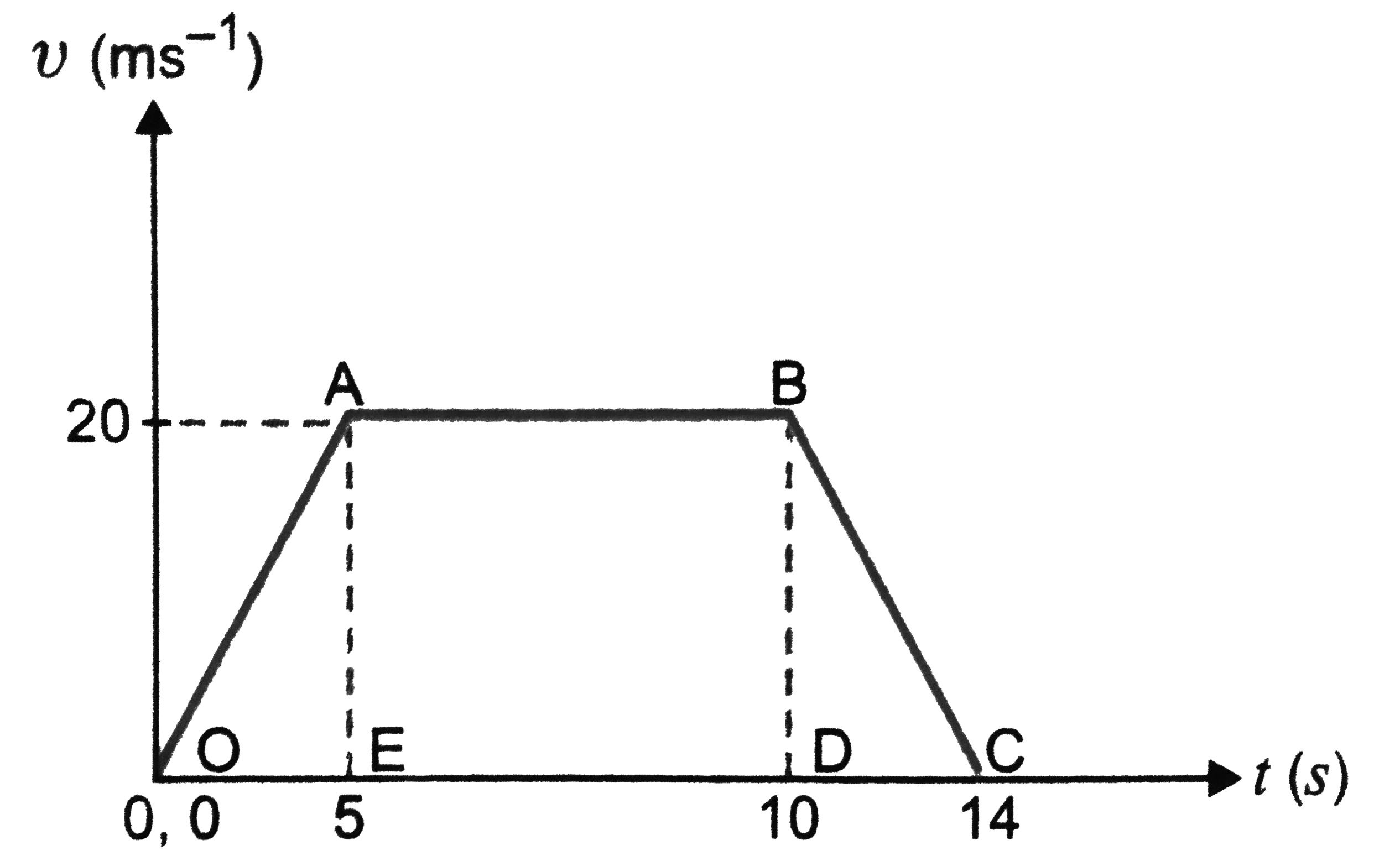A car starts uniform motion from rest, than find shapes of graphs : (i) x→t, (ii)v→t and (iii) a→tSolution in Gujrati
(i) x→t graph : Hyperbola
(ii) v→t graph : Straight line
(iii)a→tgraph : Straight line
Topper's Solved these Questions
- MOTION IN A STRAIGHT LINE BOOK - KUMAR PRAKASHANCHAPTER - MOTION IN A STRAIGHT LINE EXERCISE - SECTION-D
26 Videos
- MOTION IN A STRAIGHT LINE BOOK - KUMAR PRAKASHANCHAPTER - MOTION IN A STRAIGHT LINE EXERCISE - SECTION-E
71 Videos
- MOTION IN A STRAIGHT LINE BOOK - KUMAR PRAKASHANCHAPTER - MOTION IN A STRAIGHT LINE EXERCISE - SECTION-B
58 Videos
- MECHANICAL PROPERTIES OF FLUIDS BOOK - KUMAR PRAKASHANCHAPTER - MECHANICAL PROPERTIES OF FLUIDS EXERCISE - QUESTION PAPER (SECTION -C)
3 Videos
- OBJECTIVE QUESTIONS AS PER NEW PAPER STYLE BOOK - KUMAR PRAKASHANCHAPTER - OBJECTIVE QUESTIONS AS PER NEW PAPER STYLE EXERCISE - CHAPTER - 8 (Match Type questions)
5 Videos
Similar Questions
Among the four graph shown in the figure there is only one graph for which average velocity over the time interval (O,T) can vanish for a suitably chosen T. Which one is it ?
View SolutionVelocity of a particle is given byv=(3t2+2t)ms. Find its average velocity between t = 0 to t=3s and also find its acceleration at t = 3s. Motion of the particle is in one dimension.
View SolutionA car is moving along a straight line, say OP in It move from O to P in 18 s and returns from P to Q in 6s, where OP=360 m and OQ=240 m. What are the average velocity and average speed of the car in going (a) from O to P ? And (b) from O to P and back to Q ?
View SolutionGlycerine flows steadily through a horizontal tube of length 1.5m and radius 1.0 cm . If the amount of glycerine collected per second at one is 4.0×10−3kgs−1 , what is the pressure difference between the two ends of the tube ? (Density of glycerine =1.3×10103kgm−3 and viscosity of glycerine =0.83 Pa s). [ you may also like to check if the assumption of laminar flow in the tube is correct]
View SolutionType of satellites are given in Column-I and their uses are given in Column-II. Match them properly :
Column-IColumn-II(1) Polar satellite(a) Tele communication(2) Geo-stationary satellite(b) Investigation(c) For information about atmosphere
View SolutionDraw speed-time graph for a body (i) at rest (ii) in uniform motion (iii) in non-uniformly accelerated motion. Discuss the results briefly.
View SolutionDraw distance time graph of a body (i) at rest (ii) in uniform motion and (iii) in non uniform motion.
View SolutionDraw velocity time graph of a body
(i) at rest (ii) in uniform motion
(iii) in uniform acceleration (iv) in non uniform acceleration.
View SolutionVelocity (v) time (t) graph of a car starting from rest is shown in Fig. 2(b). 13. Draw acceleration (a) -time (t) graph for the motion of the car and find total distance travelled by car.
 .
.
View SolutionA motor car, starting from rest, moves with uniform acceleration and attains a velocity of 8ms−1 in 8 s. It then move with uniform velocity and finally brought to rest in 32 m under uniform retardation. The total distance covered by the car is 646 m. Find (i) the acceleration (ii) the retardation and (iii) the total time taken.
View SolutionA car starts from erest accelerates uniform by for 4 second and then moves with uniform velocity which of the x-t graph represent th motion of the car:-
View SolutionA car starts from rest and moves with uniform acceleration for time t then it moves with uniform speed of 60 km/h for time 3t and comes to rest. Find the average speed of car in its total journey.
View SolutionA car starts from rest and travels with uniform acceleration a, for some time and then with uniform retardation β and comes to rest. If the total time of car is 't', the maximum velocity attained by it is given by
View SolutionThe shape of a S - t graph for a non - uniform motion always be
View SolutionStarting from rest a car accelerates unifromly with 3 ms^(-2) for 5 s and then moves with uniform velocity. Drwa the distance-time graph of the motion of the car upto t = 7s.
View Solution
